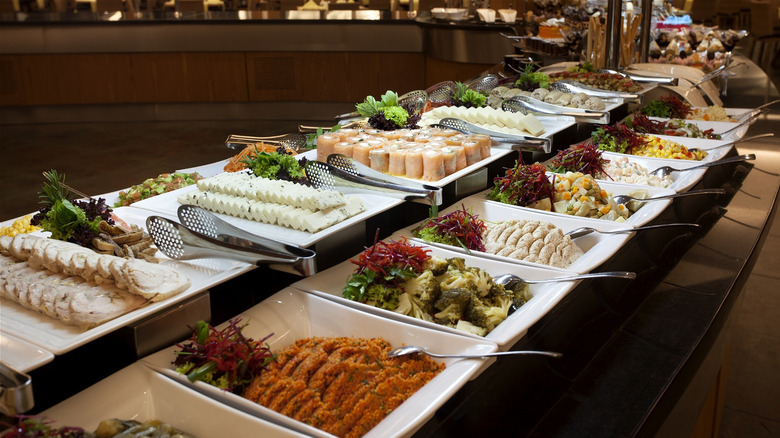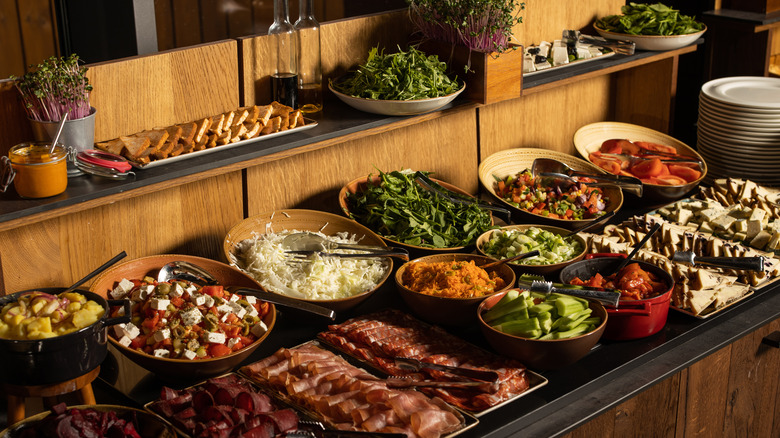Buffet Layouts Are Actually Very Strategic
At first glance, buffet-style restaurants seem like a haven for food lovers. Upon walking in, diners can be met with mountains of decadent roasted meats, freshly made sushi, the finest roasted vegetables, and a bevy of all the sweets you can imagine. On further inspection, however, these seemingly luxurious restaurants may not be exactly what they look like.
If you've ever wondered how exactly buffets really make their money while inviting guests to gorge themselves on food, the secret is that they aren't actually as inviting as they pretend to be. Many buffet-style restaurants actually use deceptive methods to trick diners into eating less food. According to TikToker Ethan Ethier, restaurants put most of their carb-heavy foods like rice and noodles at the very beginning of their lineup in an attempt to get diners to fill up on cheaper foods before they head to the bigger ticket items like meat and fish.
Another method buffets use to limit guests' food intake is offering smaller-than-usual plates. While it's true that people will choose how much food to take based on the size of their dish, a 2018 study published in Appetite found that when people are very hungry, that may not matter (and that all-you-can-eat advertisement will be enticing).
The food at buffets may leave a lot to be desired
Even though the food served up at a buffet may look like it's been cooked to perfection, the food you're eating may not be as high quality as it appears on the buffet line. In an effort to maximize their profits, some buffets have been known to use subpar ingredients in their food in order to save on costs.
@ethan.ethier How all you can eat restaurants trick you #fy #buffet #allyoucaneat
However, these corner-cutting measures haven't been sustainable, and the less-than-ideal ingredients found in some buffet foods have led to (literal) bad tastes in the mouths of diners over the years. This may have in turn contributed to a decline in the popularity of all-you-can-eat buffets over the past few decades. The prevalence of American buffets hit a sharp decline of 26% between 1998-2017, a factor that has also been exacerbated by economic woes and the concerns of increasingly health-conscious consumers. With the gloomy outlook for the future of buffets in mind, the cost-cutting methods used by some establishments don't seem quite so surprising.

